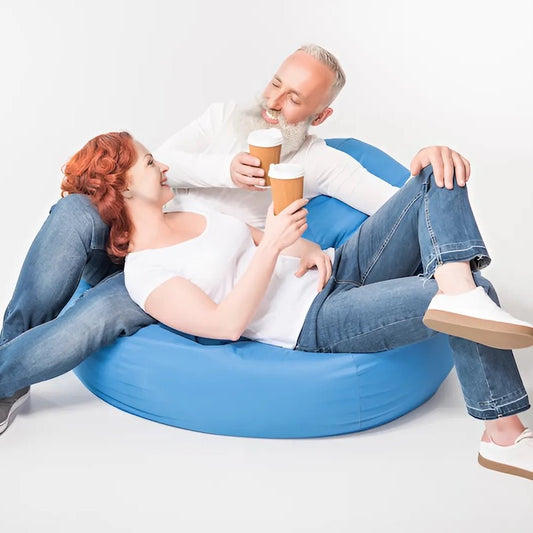When considering which type of beanbag to buy, you may be confronted with the option of purchasing a bean bag chair with an inner liner. An inner liner is usually made from lightweight mesh fabric. The purpose of the liner is to contain the bean bag filling independently of the outer cover. Often consumers see this as a benefit, for some of the following reasons.
The Advantages of Bean Bag Chair Inner Liners
Easy to clean: Because the inner liner can be removed from the bean bag cover, it makes cleaning and washing the cover easier. However, many outdoor bean bags are not machine washable. Therefore, there is no need for a removable inner liner. Fabrics that are machine-washable or dry-cleanable are more suited to having an inner liner. Easy to change: If you want to change the bean bag cover to a different colour, it's easy. All you need to do is remove the cover and insert the filled inner liner into the alternate cover. Less mess: If the stitching on your bean bag cover breaks, or if the outer cover is torn or slashed, the inner liner will usually hold the filling. It may also prevent it from spilling out on your lounge room floor. While there are advantages, there are also some disadvantages, which we've listed below.
The Disadvantages of Bean Bag Chair Inner Liners
Pairing the shape:
If you have a beanbag chair that is anything but round, positioning the inner liner, so it aligns with the form of the outer cover can be challenging to say the least. UNless tied in place, the filled liner may move around inside the cover. The beans are then not able to move around the beanbag as they should. Leaving you with an uncomfortable chair with the beans in all the wrong places.
What's a Filling Chute?
Most beanbag manufacturers will choose to use a filling chute, rather than an inner liner. Despite adding extra cost in the manufacturing phase, it does make the filling more convenient. And it is less expensive than an inner liner. A filling chute usually consists of lightweight mesh fabric. When the main zip is opened, about thirty centimetres of the material comes out of the outer cover. So you can quickly fill the beanbag. It also provides a second zipper to reduce the possibility of leaks or spills.
Double Stitching:
If you are buying a bean bag without an inner liner, it is a good idea to check that the product is double stitched and overlocked. Double stitching and over-locking reduce the chances of seams splitting and the product bursting open. Most people fear to have their living room resemble a snowfield!
Putting the Filled Liner into The Cover:
Once you've filled the inner liner, you then have to manipulate it through the main zipper. It's crucial the two patterns match, so it fits inside the outer cover. Inserting the filled liner is not much of a problem. Provided that the manufacturer has provided an extended zipper. Sometimes beanbag factories will install standard length zippers. Short zippers make it impossible to get a filled inner liner into the cover. So always check your outer cover has a long zipper. It's a good idea to check before filling the liner with beads!
Do I Need A Bean Bag Chair Inner Liner?
If you are purchasing a beanbag that is machine-washable or dry-cleanable, then it is probably preferable to obtain a bean bag chair with an inner liner. If you are buying a heavy-duty outdoor beanbag and the fabric is not machine-washable, then you are probably better off without one. The bottom line is that the filling will move freely throughout the beanbag cover and fill all the extremities better without an inner liner. Inner liners can rub against the fabric of the outer cover causing it to wear. If in doubt contact the distributor to get advice as to whether or not your product requires an inner liner.




